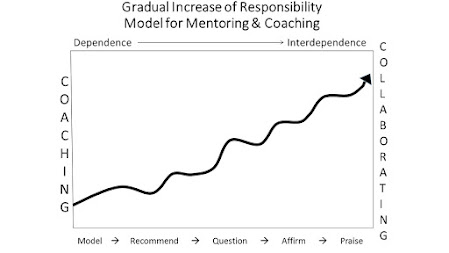Helping
a teacher get clear about learning objectives may be the most important work a
coach does during a planning conversation.
When a teacher is clear about objectives, she can select activities that
will be most likely to guide her students there. When she is clear about
objectives, she can be flexible in the midst of a lesson – deciding to back up
to lay additional groundwork, correct misconceptions, or scrap something that
isn’t working. Carol Tomlinson said, “A fuzzy sense of the essentials results
in fuzzy activities, which in turn results in fuzzy student understanding.
That’s the barrier to high-quality teaching and learning.”*
When
a teacher has clarity about student outcomes, the learning activities selected
will be likely to lead to stronger skills and clear understanding of ideas.
Instructional outcomes should represent high expectations for student learning
and focus on important aptitudes and ideas.
The
teachers you are working with will need different support from you to ensure
clear and meaningful objectives guide each lesson. Some teachers may benefit if
you model the expert thinking that guides selection of
objectives. It’s like doing a read aloud
with objectives – saying aloud what is going on so automatically in your head
as you make determinations about where to go next with student learning.
Other
teachers may look for recommendations from you about learning
objectives. When you make recommendations, you are drawing on your own experience
and your knowledge of the developmental processes of learning. By framing recommendations in ways that offer choice, you safeguard
the teacher’s agency and acknowledge the value of their own knowledge of their
students.
Coaches can also ask questions
to support effective lesson objectives. Questions like these can lead to useful
outcomes:
· Why is this important?
Asking questions encourages teachers to
draw on their own knowledge and experience as they select targets for student
learning.
When teachers have selected
sound instructional objectives but are still looking to their coaches for
confirmation, affirming is an effective coaching move, And when
you see effective lesson objectives included, praise is all that
is needed! Modeling, recommending, questioning, affirming, or praising are ways
to differentiate the support you provide to teachers as they determine clear
objectives.
This
week, a teacher came to me frustrated after a lesson that she felt didn’t go
well. When an activity wasn’t working,
she didn’t know how to pivot. As we talked, it seemed she had thought more
about the activity itself than about the learning she was hoping it would
create. Her lack of clear objectives hindered her ability to meet her students’
needs. She decided a focus on learning outcomes would be important as she planned
what to do next.
The
positive effects of clear outcomes were evident in a conversation with a group
of first-grade teachers who talked about how they used their professional
judgement, even with the scripted curriculum they are expected to follow this
year. Because they are clear about learning objectives, they are able to look
at lessons together and decide what to leave out, what to modify, and what to
emphasize in the pre-planned lessons.
They are clear about where their students are going, and this clarity
guides their professional decision-making.
They also talked about flexibly adapting lessons in the moment, again
guided by what they wanted their students to know and be able to do.
Clear
objectives lead to consistent, coordinated instruction, and giving attention to
increasingly ambitious outcomes creates a coherent curriculum and raises
expectations for learning. Coaching for
clarity about what students should know, understand, and be able to do as a
result of a lesson ensures that fuzzy objectives will not lead to fuzzy
activities that result in fuzzy understanding for students.
*Tomlinson, C. & Imbeau, M.
(2014), Leading and Managing a Differentiated Classroom. p. 62.
This week, you might want to take a look at:
Was
this helpful? Please share!
Want to know about new posts? Click “Follow” (bottom right)
Follow on Facebook at: facebook.com/mycoachescouch or Twitter @vscollet for more coaching and teaching tips! You can also find me at VickiCollet.com.
Want to know about new posts? Click “Follow” (bottom right)
Follow on Facebook at: facebook.com/mycoachescouch or Twitter @vscollet for more coaching and teaching tips! You can also find me at VickiCollet.com.



No comments:
Post a Comment